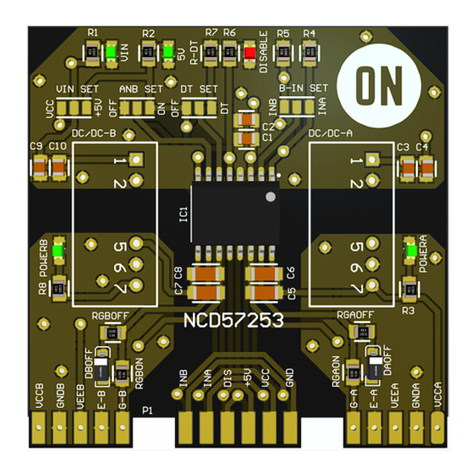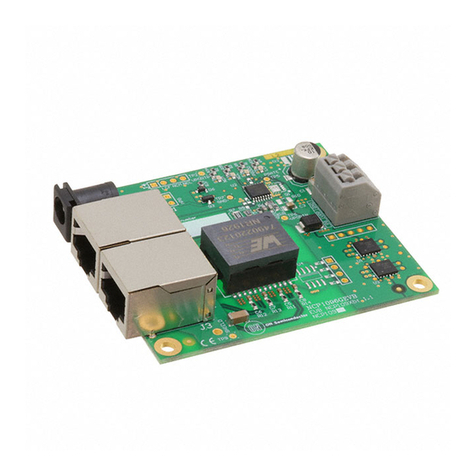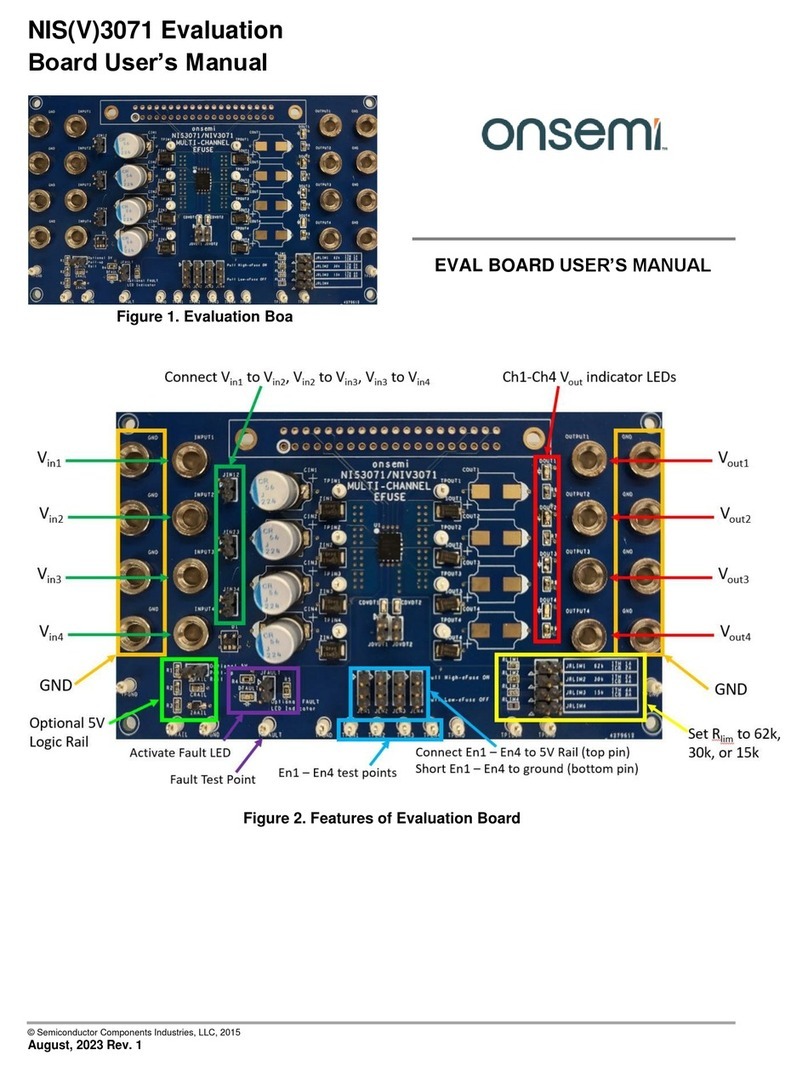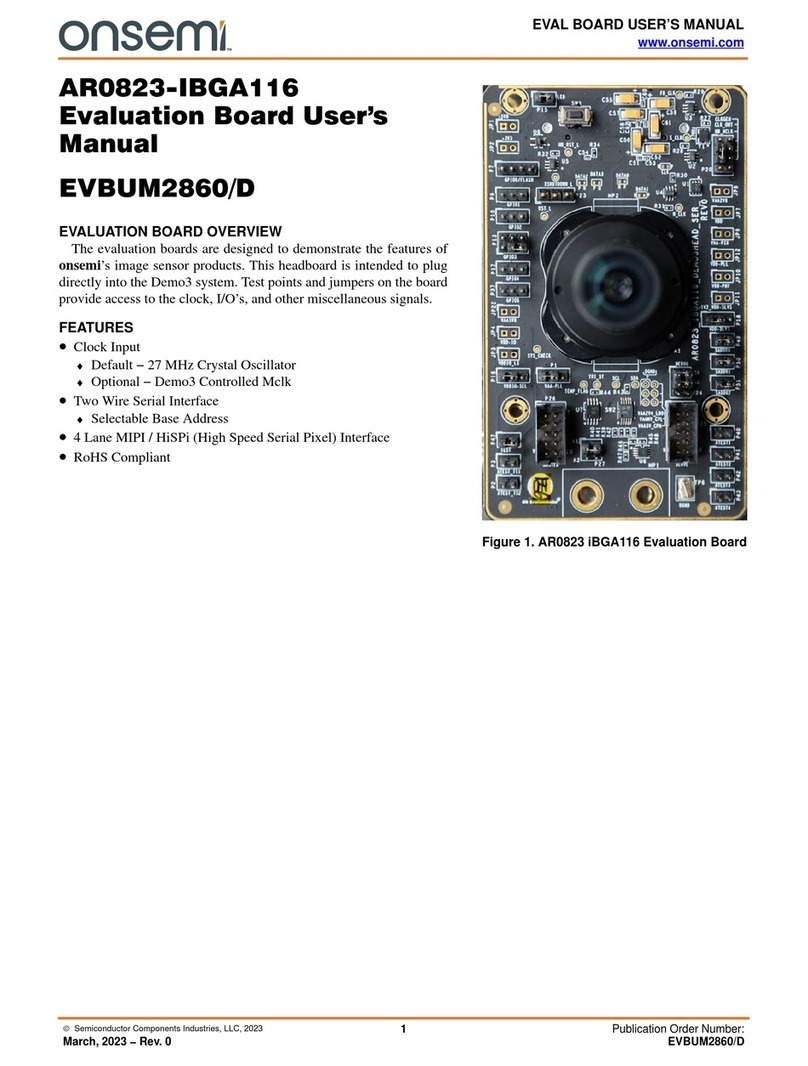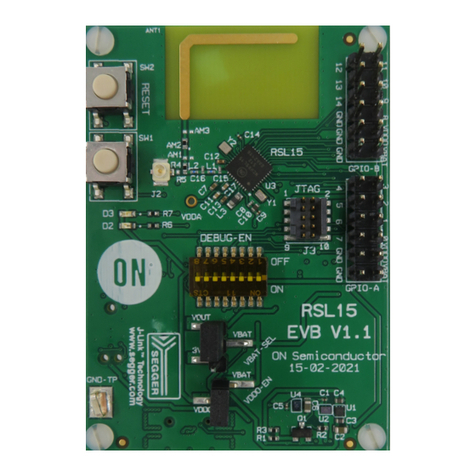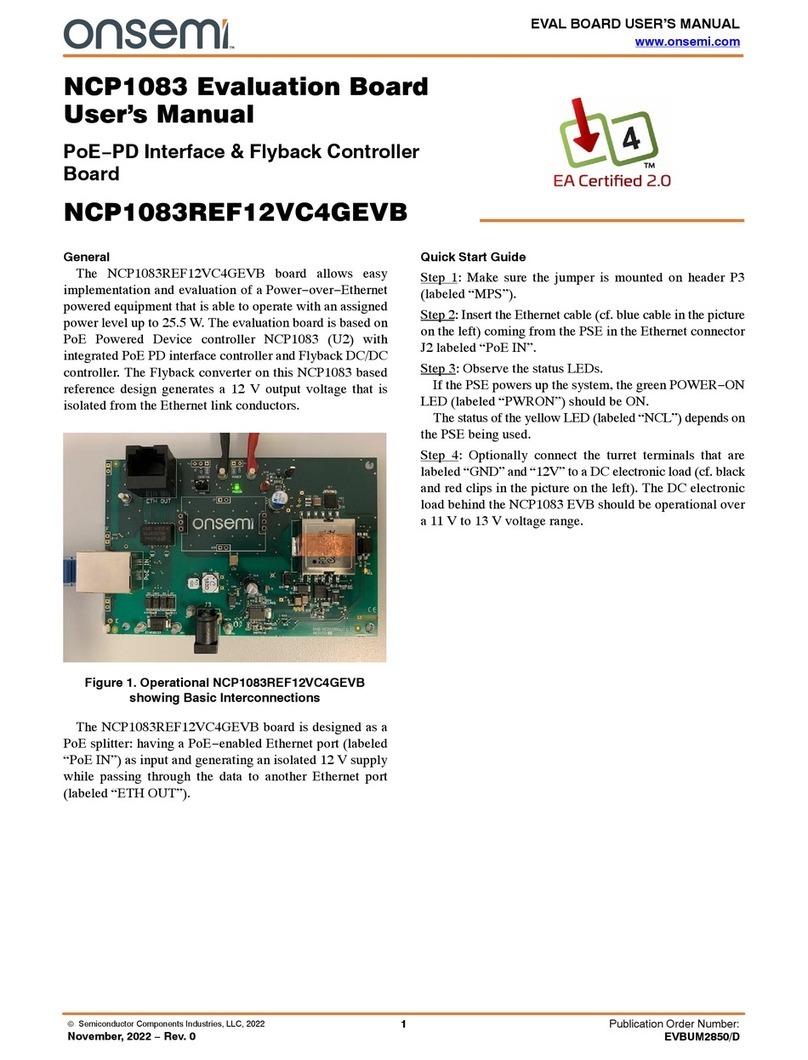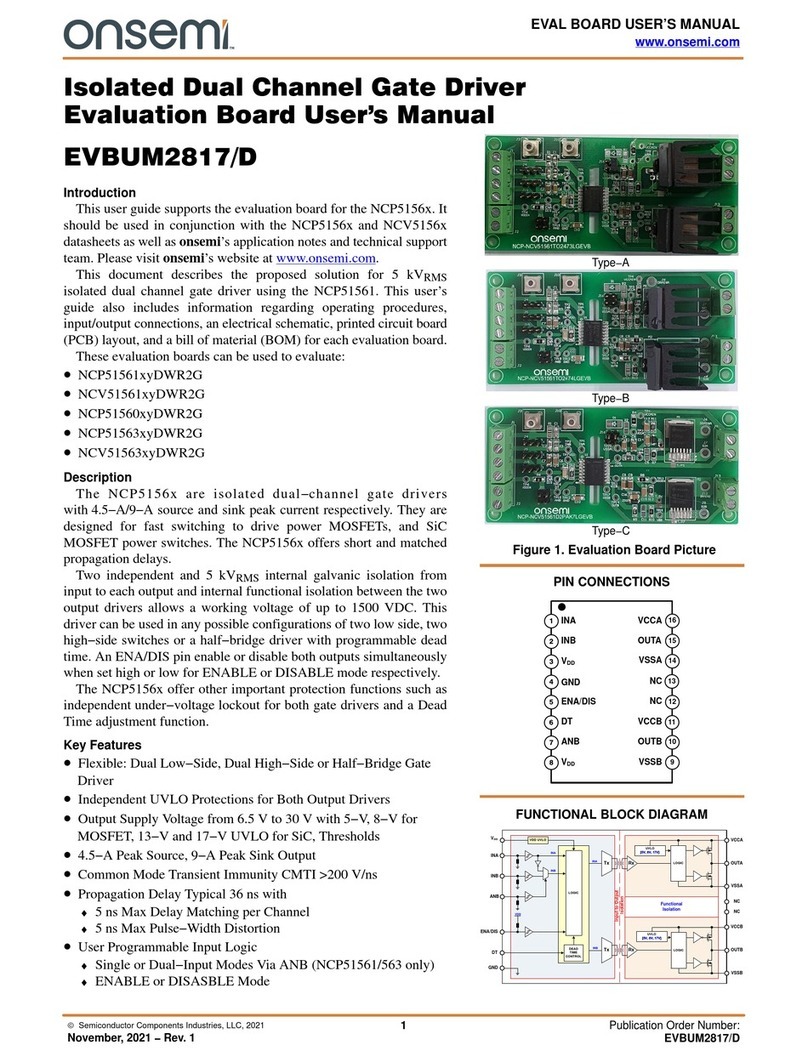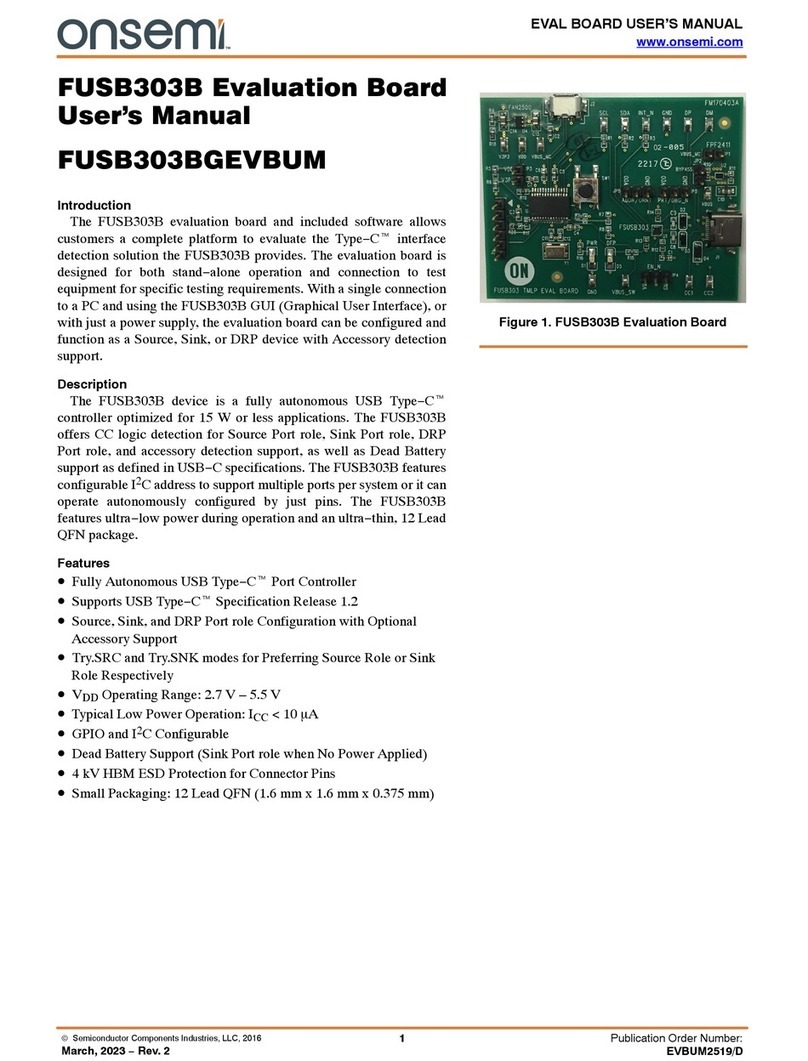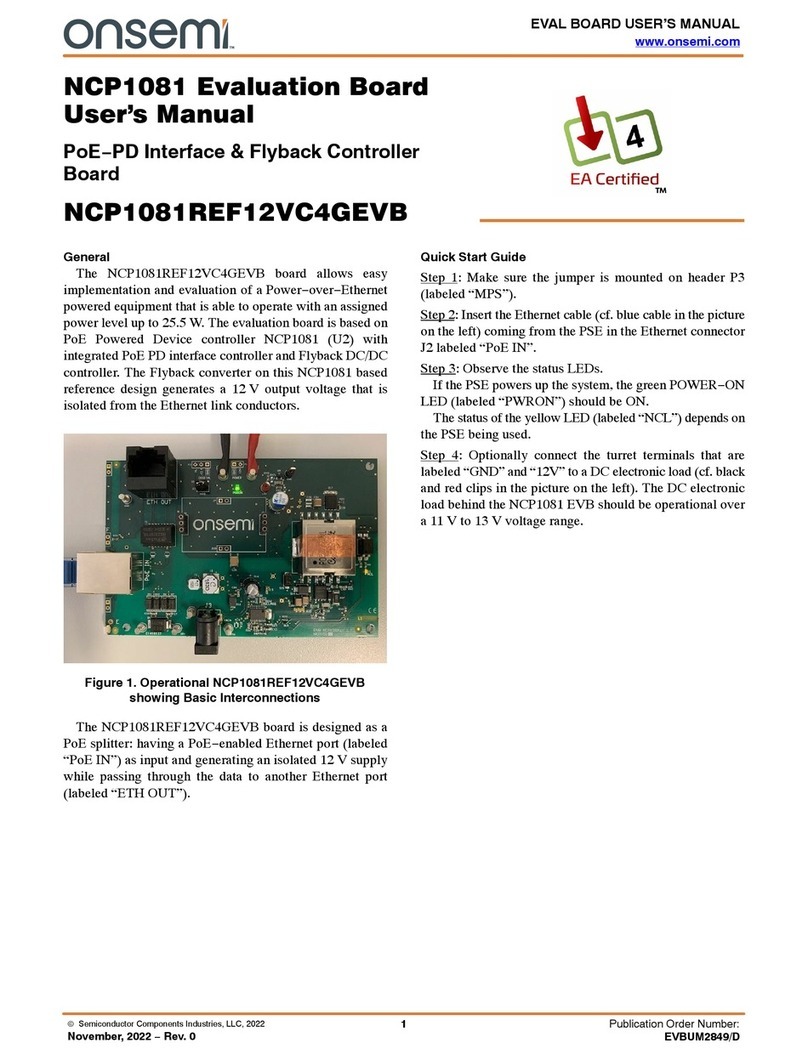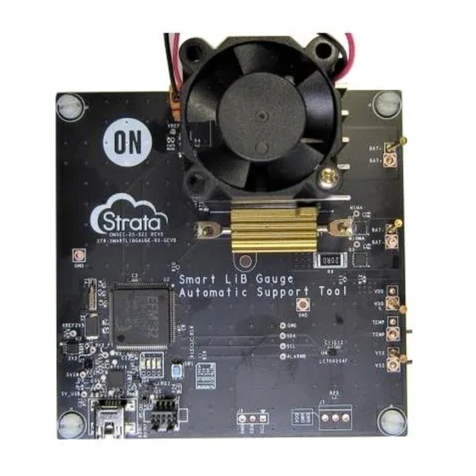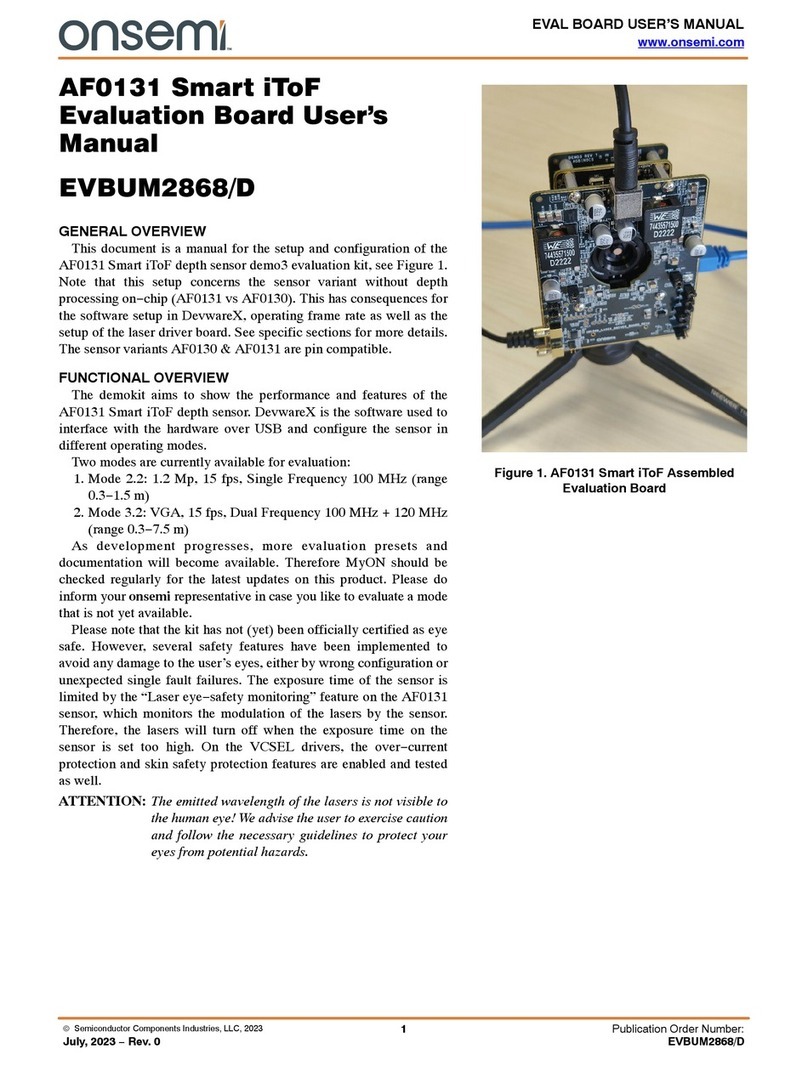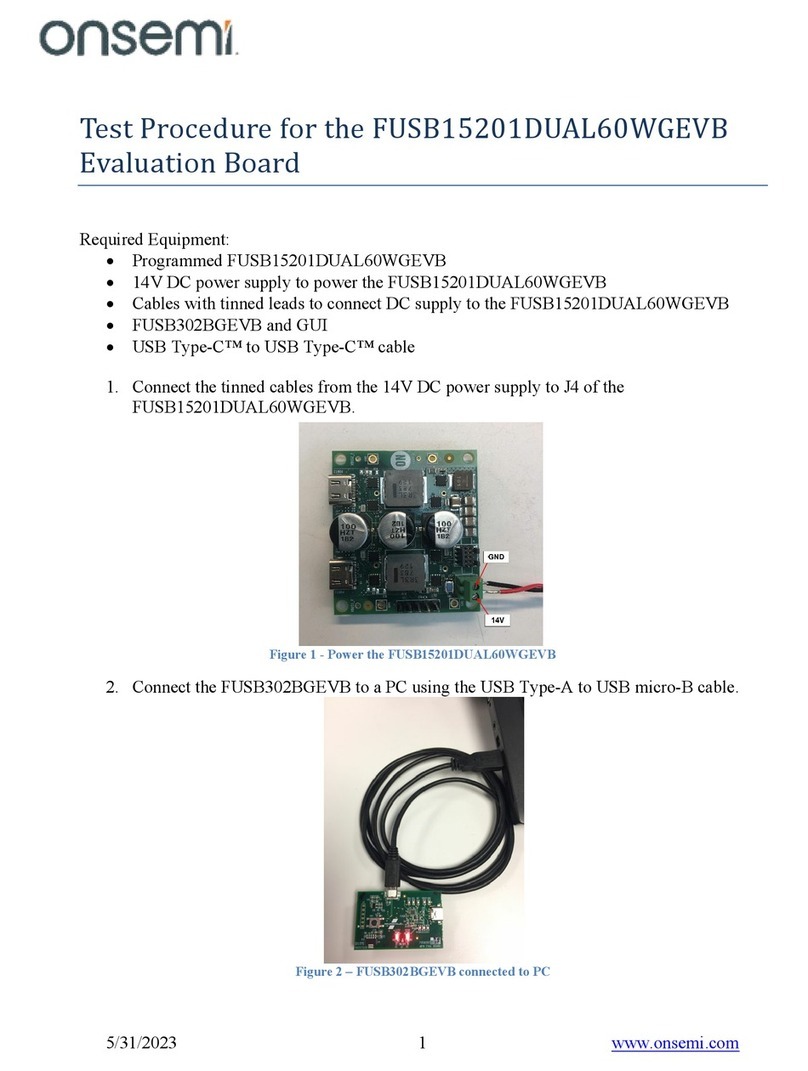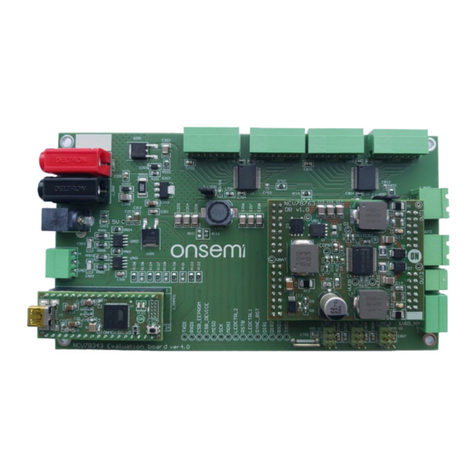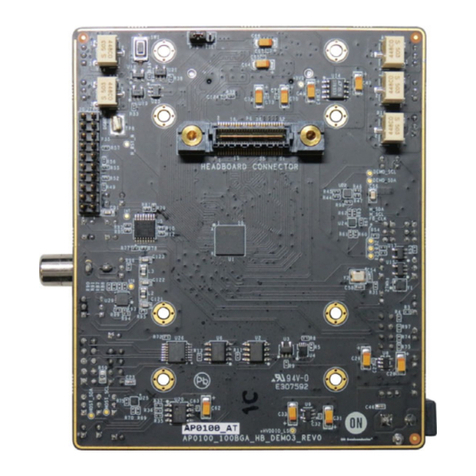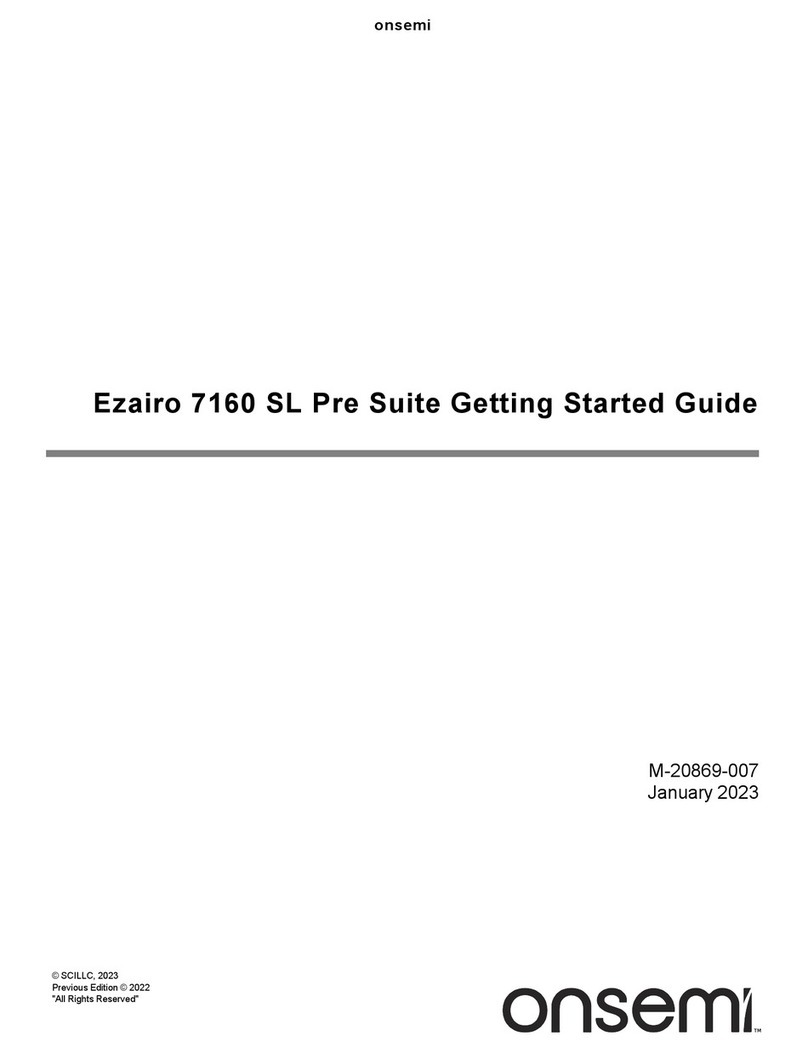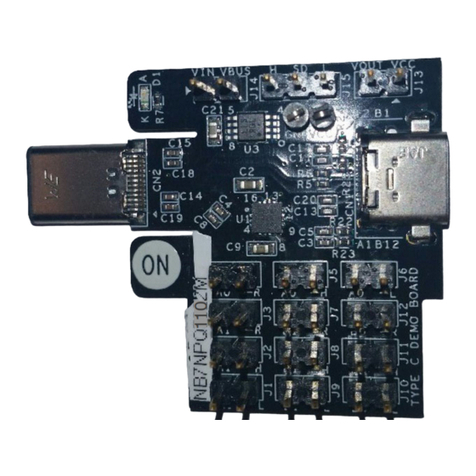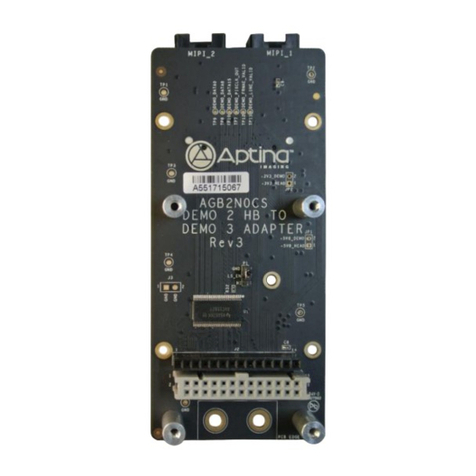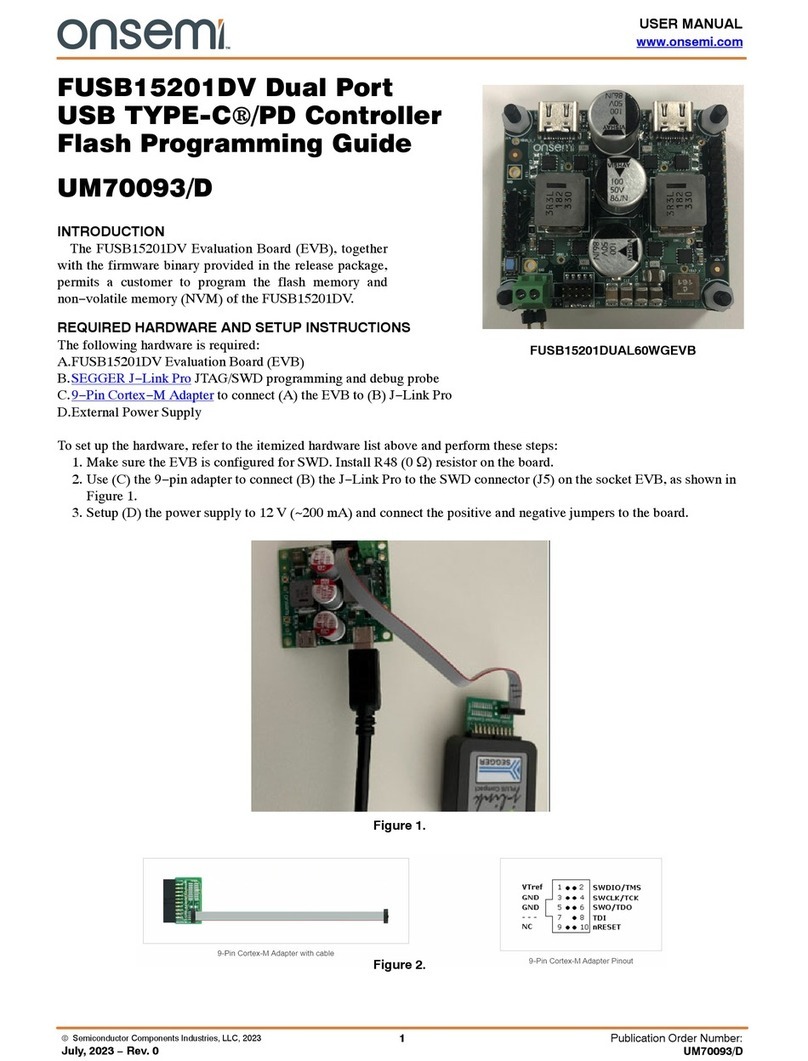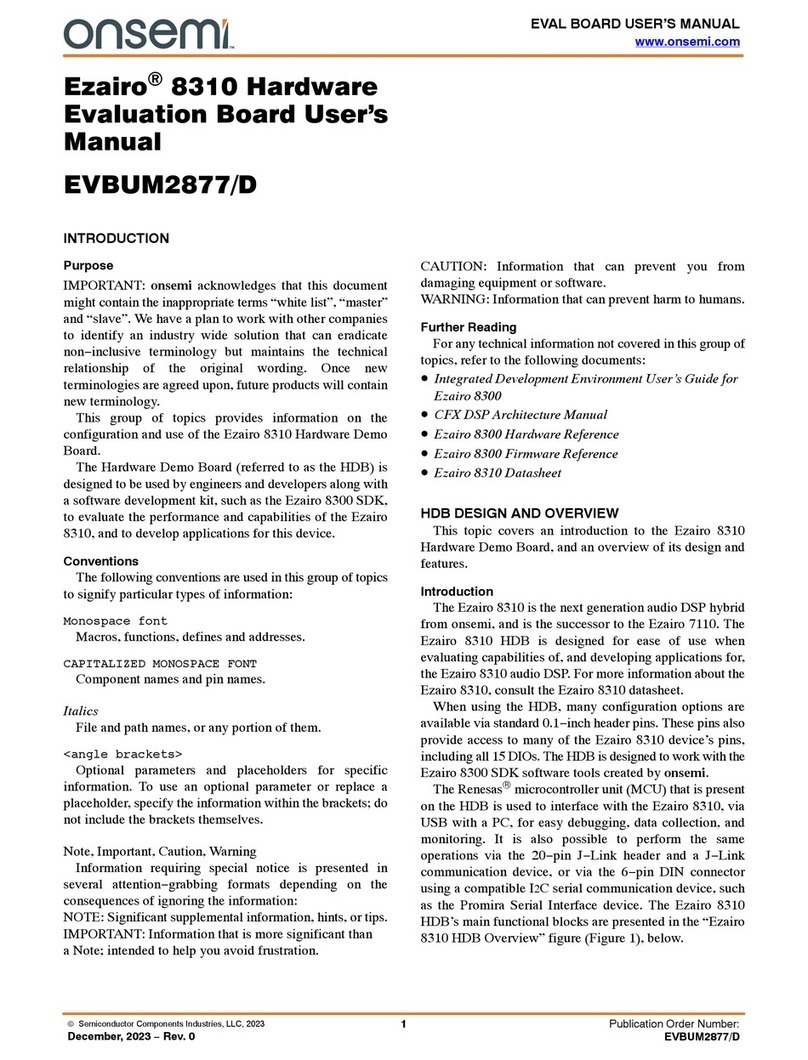
EVBUM2581/D
www.onsemi.com
4
back the settings to confirm that the values burned to
the device match what is being read out of the device.
This option requires additional programming time.
Next, click on Detect. A successful detection will
populate the device information in the Device Info
box.
9. Use the back button−the arrow in the top left
corner−to return to the Control Panel.
10. To configure the device for the selected product,
click Programmer > Connect. If the connection
succeeds, the Connection status symbol appears to
the right of the File Name. You can hover over this
symbol to view the programmer name and the
firmware ID of the device. The connected device
must now be configured before you can read, burn or
write parameters in Control Panel. Click
Programmer > Configure to do this.
11. Now you are ready to begin. See Chapter 3,
“Modeler” on page 15 of the Ezairo Sound Designer
Software User Manual for your next steps in the
process of developing a product with Sound
Designer software.
Power Supply
The Ezairo 7160 SL demonstrator board is split into two
distinct subsystems, the Ezairo 7160 module and an Atmel
microcontroller which acts as an on−board J−Link debugger,
to interface and control the RSL10 portion of the Ezairo
7160 SL hybrid without using an external J−Link device.
Therefore, there are also 2 subsystems in the power supply.
One subsystem supplies power to the Ezairo 7160 SL and the
other supplies power to the Atmel microcontroller, with
variations and configurations options available for each.
Ezairo 7160 SL Demonstrator Board Power Supply
Ezairo 7160 SL can be powered from several sources,
including the onboard battery connector, an external power
supply connected via header pins, or from the 6−pin DIN
CAA connector. Shorting two pins together on the
PSU_SEL header chooses which supply source to use, see
Table 1. It is also possible to separately turn off the Ezairo
7160 SL using the on−off switch. This will only turn off
power to that module, not the onboard Atmel
microcontroller. This can, for example, be used to save
battery power if using a battery as the power supply source.
For Ezairo 7160 SL to be powered, the VBAT-I header must
also be shorted. The VBAT-I header optionally provides
a location to measure current consumption of Ezairo 7160
SL.
Table 1. Ezairo 7160 SL POWER SUPPLY OPTIONS
PSU_SEL Power Supply Source
Short pin 1 to 2 6−Pin DIN (CAA Connector)
Short pin 3 to 4 External Bench Supply (EXT_PSU header)
Short pin 5 to 6 Battery (On board battery holder)
Table 2. VBAT SUPPLY
Pin Name Min Nom Max
VBAT 1.13 V 1.25 V 2.0 V
Atmel Microcontroller Power Supply
The Atmel microcontroller core is powered by a 3.3 V
LDO regulator. The regulator is powered by a 5 V rail, which
is supplied either by a USB or JTAG connection. The source
for this 5 V rail is selected using the 5 V_SEL header. See
Table 3. This 3.3 V power source is provided to the
microcontroller’s internal regulator, which outputs 1.8 V
that is used to power the microcontroller. The rest of the
voltage supplies on the microcontroller, for Digital
Input/Outputs and Analog references, etc. are supplied from
the VDD_AT_SEL header. See Table 4 for configuration
options. Table 5 lists the range of voltage outputs possible
for the VDBL output. Do note that the UTMI on the
microcontroller expects 3.0 V −3.6 V. Selecting VDBL as
a source will put the UTMI out of its operating range. See the
Ezairo 7100 Hardware Reference Manual on details for
VDBL configuration.
Table 3. ATMEL MICROCONTROLLER POWER
SUPPLY SELECTION
PSU_SEL Power Supply Source
Short pin 1 to 2 USB power
Short pin 2 to 3 JTAG power
Table 4. ATMEL MICROCONTROLLER DIO, AREF,
UTMI POWER SUPPLY SELECTION
PSU_SEL Power Supply Source
Short pin 1 to 2 3.3 V Onboard regulator
Short pin 2 to 3 Configurable voltage output from E7160
(VDBL)
Table 5. VDBL VOLTAGE CONFIGURABLE OUTPUT
RANGE
Pin Name Min Nom Max
VBAT 1.8 V 2.0 V 2.1 V
Communication
There are a few ways of achieving communication with
the Ezairo 7160 SL demonstrator board:
The micro USB connection (J2) is a J−Link onboard
adaptor that provides a SWJ−DP/UART interface for
debugging of the RSL10.
It is also possible to connect and debug RSL10 via
standard JTAG. The JTAG (J-Link header) connector is
compatible with the J−Link debugging device from Segger.
